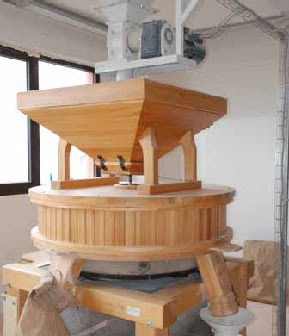by Tom Blacker, Milling and Grain magazine
First published in Milling and Grain, May 2016
First published in Milling and Grain, May 2016
The Newcopan mill, located in the quaint Tuscan town of Castelfiorentino just south west of Florence, is a new mill by Golfetto Sangati which was built to produce traditional Tuscan flour.
However, there is much more to what is being produced here than first meets the eye.
The Tognetti family, entrepreneurs in the bakery industry for well over 50 years, are proud to show their new mill, which was built with the specific aim of processing one of the most typical and ancient cereals of Tuscany, the Verna wheat.
The strategy for this mill derives from the first PIF (Progetto Integrato di Filiera, i.e. Integrated Production Chain Project), developed by Regione Toscana on cereals. The agronomy department of Scuola Superiore Sant’Anna di Pisa and the medicine department of Firenze University cooperated in order to preserve and enhance local varieties of agricultural products by producing farm-to-table food.
The mill processes grains farmed by 60 Tuscan crop farmers and is the first project of its kind in Italy, thus improving the traceability of flour from farm-to-mill, mill-to-bakery and bakery-to-market; guaranteeing the superior quality of the food.
Verna grain: health and tradition
The Verna variety of flour is also said to be a healthy alternative as Tuscan bread. Here below are its main features: Increased amounts of beneficial nutrients (vitamins of group B as folic acid and vitamin B6 and minerals such as phosphorus, magnesium, selenium).
Read the full article in Milling and Grain HERE.
However, there is much more to what is being produced here than first meets the eye.
The Tognetti family, entrepreneurs in the bakery industry for well over 50 years, are proud to show their new mill, which was built with the specific aim of processing one of the most typical and ancient cereals of Tuscany, the Verna wheat.
The strategy for this mill derives from the first PIF (Progetto Integrato di Filiera, i.e. Integrated Production Chain Project), developed by Regione Toscana on cereals. The agronomy department of Scuola Superiore Sant’Anna di Pisa and the medicine department of Firenze University cooperated in order to preserve and enhance local varieties of agricultural products by producing farm-to-table food.
The mill processes grains farmed by 60 Tuscan crop farmers and is the first project of its kind in Italy, thus improving the traceability of flour from farm-to-mill, mill-to-bakery and bakery-to-market; guaranteeing the superior quality of the food.
Verna grain: health and tradition
The Verna variety of flour is also said to be a healthy alternative as Tuscan bread. Here below are its main features: Increased amounts of beneficial nutrients (vitamins of group B as folic acid and vitamin B6 and minerals such as phosphorus, magnesium, selenium).
Read the full article in Milling and Grain HERE.
The Global Miller
This blog is maintained by The Global Miller staff and is supported by the magazine GFMT
which is published by Perendale Publishers Limited.
For additional daily news from milling around the world: global-milling.com



No comments:
Post a Comment